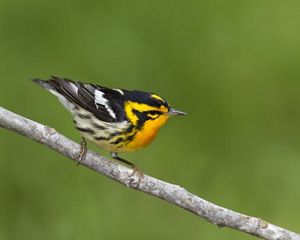The predominant narrative of European settlers has been that the Adirondacks were never permanently inhabited by Indigenous Peoples. There is now an understanding that the historical portrayal of the Adirondacks as an empty wilderness is inaccurate, and some of that evidence comes from near Follensby property, which includes the Raquette River Recreational Access Conservation Easement Tract.
The Penobscot, Abenaki, Oneida and Mohawk Nations are all known to have hunted, fished and lived in this region. An old portage trail, extending from Upper Saranac Lake to Stony Creek Ponds, still carries the name Indian Carry Road, and there are indications that the carry reached all the way to the Raquette River at the northeast border of the Follensby Pond tract.
Several private timber companies owned Follensby Pond in the 1800s and early 1900s and, reportedly, some of their logging practices devastated parts of the surrounding forests. The Nature Conservancy has been caring for these lands since it acquired the property from the McCormick family in 2008. Our commitment to Follensby includes honoring the full biological and cultural relationships in this special place, informed by collaboration with Indigenous Peoples and assisted through our partnership with the SUNY College of Environmental Science and Forestry’s Center for Native Peoples and the Environment.
“There is growing evidence from all around the world that biodiversity flourishes under Indigenous stewardship,” said Dr. Robin Wall Kimmerer, director of the Center for Native Peoples and the Environment. “With our partners, we look forward to creating opportunities for a productive collaboration between Traditional Ecological Knowledge and conservation science based on mutual respect, reciprocity and shared access. Land care which reflects Indigenous perspectives and priorities has the potential to enhance the well-being of land and cultures in the extraordinary landscape of Follensby Pond.”
Follensby also holds significant historical value as the site of the 1858 Philosophers’ Camp, where Ralph Waldo Emerson, William Stillman and other prominent 19th-century thinkers spent a month immersed in nature—an experience that influenced a new conservation movement. Soon after, stories of the Philosophers’ gathering spread, and people began to flock to the Adirondacks to seek their own solitude. Maps pointed the way to Follensby, which became overrun with tourists. When one of the original 10 philosophers returned to the site in 1884, he wrote that all around were, “ashes and ruin.”
Today, the land has recovered and offers lessons on resilience. In 1950, for instance, Follensby was one of the last places in the Adirondack Park with nesting bald eagles. By the 1960s, eagle populations had plummeted due to the use of the now-banned pesticide DDT, and only one pair remained in New York. This once endangered bird’s populations have since rebounded thanks in part to DEC’s introduction of bald eagle chicks at Follensby that were brought in from Alaska in the 1980s. Follensby was selected as the sole site for raising and releasing the birds in the Adirondacks because of its abundant habitat and lack of human disturbance. As many as 60 eaglets were released at Follensby over several years, and today more than 170 nesting pairs of bald eagles live throughout the Adirondacks and New York State.




